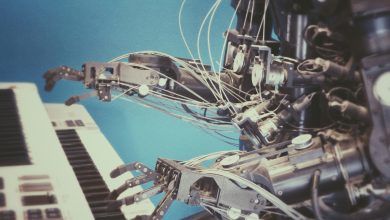
Remote work has transformed the way companies operate, allowing them to tap into global talent like never before. Teams are now spread across continents, bringing together diverse perspectives, skills, and experiences. But with this global reach comes a significant challenge: communication.
Language barriers, cultural differences, and varying communication styles can slow down collaboration, lead to misunderstandings, and reduce productivity. The good news? AI-powered tools are changing the game.
From real-time translation to cultural intelligence coaching, AI in remote work is making it easier than ever for global teams to work seamlessly, no matter where they are. Here’s how.
AI-Powered Translation: Removing Language Barriers in Real Time
One of the biggest challenges in global teams is language. Miscommunication can lead to errors, frustration, and even lost business opportunities. AI-powered translation tools are making it possible for teams to collaborate effectively—even if they do not share a common language.
The Challenge
Imagine a virtual meeting with employees from China, France, and Brazil. Everyone speaks English as a second language, but accents and phrasing differences make it difficult to fully understand each other. Some employees hesitate to ask for clarification, slowing down decision-making.
The AI Solution
AI-powered translation tools like Microsoft Teams’ AI Interpreter provide real-time speech-to-speech translation, allowing everyone to hear and read conversations in their preferred language. It maintains the speaker’s natural tone and voice, making the conversation feel more personal.
Similarly, platforms like Hedy.ai analyse conversations in multiple languages and provide instant translations, helping teams avoid miscommunication while also offering cultural context for better understanding. These tools are not just translating words—they are ensuring that the meaning and intent behind them remain clear.
Cultural Intelligence: Understanding More Than Just Words
Language is only part of the challenge. Cultural differences also shape how people communicate, give feedback, and interact professionally.
For instance, some cultures value direct feedback, while others consider it impolite. In some regions, silence in a conversation signals thoughtfulness; in others, it can be seen as disengagement. Without an awareness of these differences, remote teams can face misunderstandings that affect collaboration.
How AI is Helping
AI-powered communication tools are now providing cultural coaching to help teams work more effectively across different cultures.
- Tidio AI and Gong.io analyse email and chat conversations, offering suggestions for clearer messaging based on cultural norms.
- AI can detect whether a message might come across as too direct or too vague in a particular culture and suggest adjustments to avoid misinterpretation.
- Some platforms even offer virtual cultural training by analysing workplace interactions and highlighting areas where cultural differences may cause friction.
Rather than replacing human understanding, AI is acting as a guide, helping teams navigate cultural nuances with confidence.
Real-World Success Stories
Many companies are already using AI to improve global communication and reduce barriers.
- Teleperformance, a global call centre company, has introduced AI that “neutralises” accents to make customer interactions clearer. This tool modifies speech patterns in real time, ensuring that agents and customers can understand each other more easily. However, this has sparked debate about whether AI should be used to change accents rather than encourage cultural diversity in customer interactions.
- Tarjimly, a non-profit organisation, leverages AI to provide real-time interpretation services for refugees. It uses a mix of AI and human volunteers to ensure fast and accurate translations, helping people in critical situations navigate language barriers effectively.
These examples highlight how AI is not just improving business efficiency but also having a broader social impact by making communication more accessible worldwide.
Challenges and Ethical Considerations
While AI presents exciting opportunities, it also raises important ethical concerns.
- Cultural Sensitivity – Some worry that AI tools, particularly those that neutralise accents or adjust cultural communication styles, may erase cultural identity rather than embrace diversity.
- Bias in AI Models – AI systems learn from existing data, and if that data lacks diversity, they can reinforce stereotypes rather than break them. Ensuring diverse, high-quality training data is crucial to avoid biases.
- AI vs. Human Connection – While AI improves efficiency, human connection remains essential. Over-reliance on AI could reduce the importance of developing real, interpersonal relationships within global teams.
Companies must use AI tools responsibly, ensuring they enhance communication rather than replace human understanding.
The Future of AI in Remote Collaboration
AI is evolving rapidly, and its role in remote work will only expand. In the near future, we can expect:
- More advanced real-time translations that capture emotions and context, not just words.
- AI-powered training programmes tailored to individuals’ cultural communication styles.
- AI-driven virtual assistants that facilitate better global collaboration by suggesting meeting times based on cultural work habits, adapting presentations for different audiences, and even detecting potential communication issues before they arise.
Books like AI Culture Shift: Frameworks to Elevate People and Transform Organisations explore how AI can help businesses build more inclusive and effective teams by balancing technology with human connection.
As AI becomes more sophisticated, it will go beyond simply bridging language barriers—it will enhance global collaboration, build cultural understanding, and make remote work more seamless than ever.
Final Thoughts
AI is proving to be a powerful tool in breaking down communication barriers for global teams. Whether through real-time translation, cultural coaching, or AI-powered insights, these technologies are helping teams work together more effectively, regardless of location.
But AI is not a perfect solution. Businesses must implement these tools thoughtfully, ensuring they support cultural diversity rather than eliminate it. When used correctly, AI can connect people, improve communication, and make remote collaboration truly global.
The question remains: Is AI the future of workplace communication, or should we still rely on human intuition to navigate cultural and language differences?
Let’s start the conversation.




